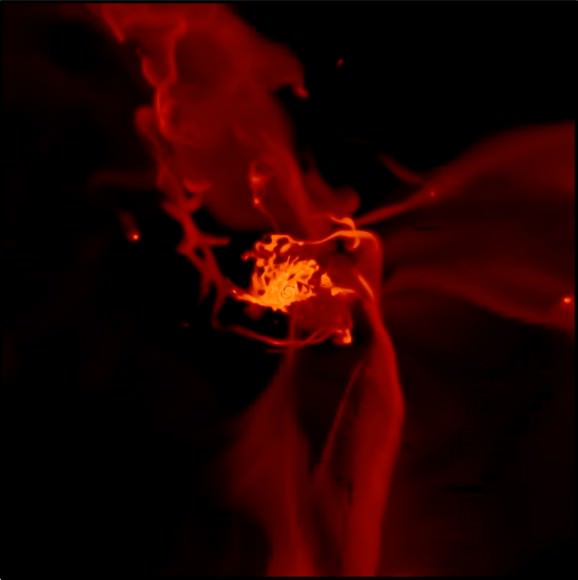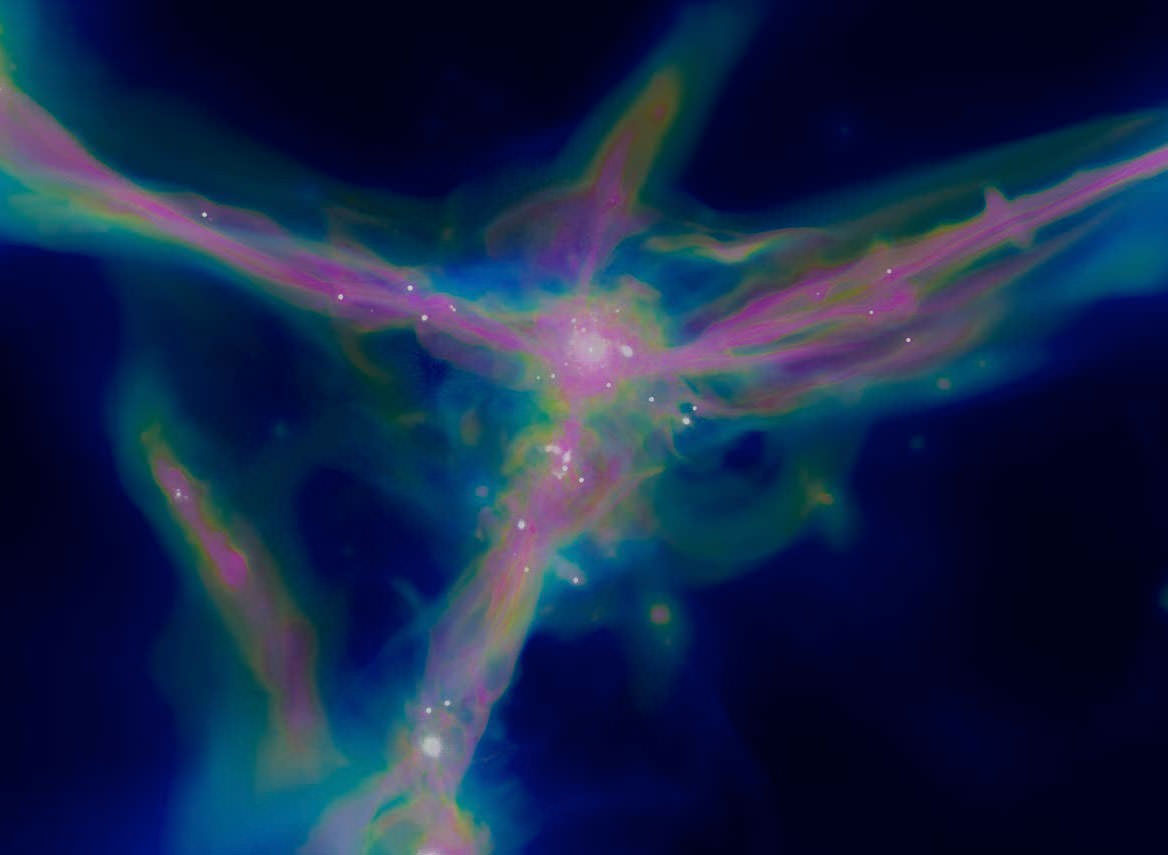[/caption]
Is there any place in space which hasn’t been affected by time? The answer is yes. Thanks to some very awesome research, the W. M. Keck Observatory and a team of scientists have recently located two clumps of primordial gas which may very well have had its origin within minutes of the Big Bang.
How do we know these gas clouds are so special? In this case, they are simply too disseminated to enable stellar birth and contain no heavy metals which would support it. These diaphanous regions are pure hydrogen and helium… along with a heavier isotope, deuterium. This combination could mean the two billion year old regions are pure – never involved in the star-forming process. An exciting discovery? You bet. The clouds could have possibly survived in an unchanged state – giving us a look at what may have occurred at the dawn of time.
“Despite decades of effort to find anything metal-free in the universe, Nature has previously set a limit to enrichment at no less than one-thousandth that found in the Sun,” said astronomer J. Xavier Prochaska of the University of California Observatories-Lick Observatory, U.C. Santa Cruz. “These clouds are at least 10 times lower than that limit and are the most pristine gas discovered in our universe.”
Prochaska is part of the Keck team and has coauthored a paper reporting on the discovery with Michele Fumagalli of the U.C. Santa Cruz and John O’Meara of Saint Michael’s College in Vermont. “We’ve searched carefully for oxygen, carbon, nitrogen and silicon – the things that are found on Earth and the Sun in abundance,” Fumagalli said. “We don’t find a trace of anything other than hydrogen and deuterium.”
According to the Keck Observatory news release exactly how they can detect dark, cold, diffuse gas about 12 billion light-years away is a story in itself.
“In this case we actually have to do a bit of a trick,” Prochaska explained. “We study the gas in silhouette.” A more distant quasar provides the light for this. The quasar light shines though the gas and the elements in the gas absorb very specific wavelengths of light, which can only be found by splitting the light into very detailed spectra to reveal the dark lines of missing light.
In other words, said Fumagalli, “All of the analysis is on the light we didn’t get.” The clouds absorb only a small fraction of the quasar light that makes it to Earth. “But the signatures of hydrogen absorption are obvious, so there’s no doubt there’s a lot of gas there.”
While some folks might not get excited over the location of immaculate gases, astronomers think differently. This revelation supports their theories of what may have occurred within moments after the Big Bang and what formed at the time of nucleosynthesis. It’s a look back at when hydrogen, helium, lithium and boron originated.

“That theory has been very well tested at Keck as regards to hydrogen and its isotope deuterium,” said O’Meara. “One of the conundrums of that previous work, however, is that the gas also showed at least trace amounts of oxygen and carbon. The clouds that we have discovered are the first to match the full predictions of BBN.”
What’s more, Keck’s two 10-meter optical/infrared telescopes have shown us what the early universe may have been like. This is the very first time that science has been able to peer into regions where no metals have influenced the environment and no stars have formed.
“What excites me about this discovery is that there is an almost a range of 1,000,000 in the metallicity in gases at that time in the universe,” said Fumagalli. In other words, there were places like our Solar system – where metals are very abundant – and there were also places very unlike today, where metals were still virtually non-existent and the gases were unchanged since almost the beginning of time.”
Original Story Source: Keck Observatory News Release. For Further Reading: Detection of Pristine Gas Two Billion Years After the Big Bang.

